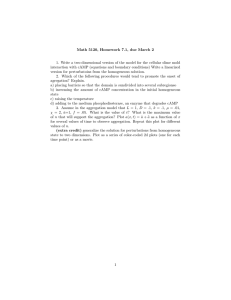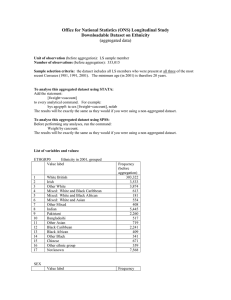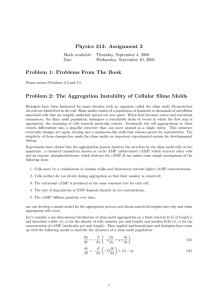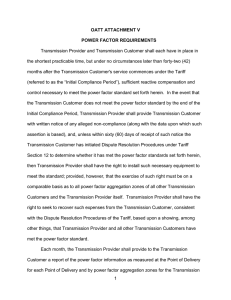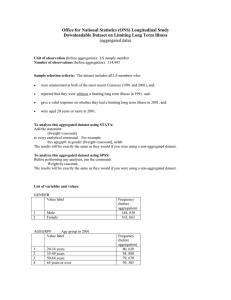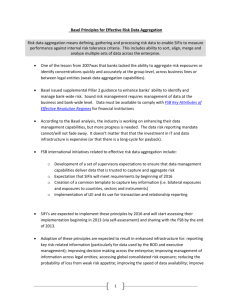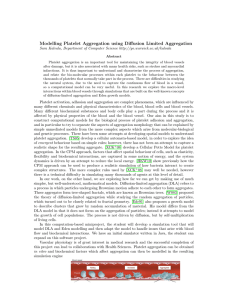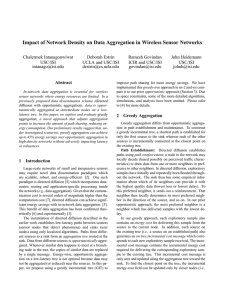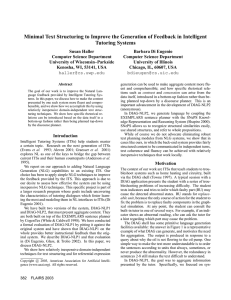Math 5120 Homework 7.1 Solutions
advertisement
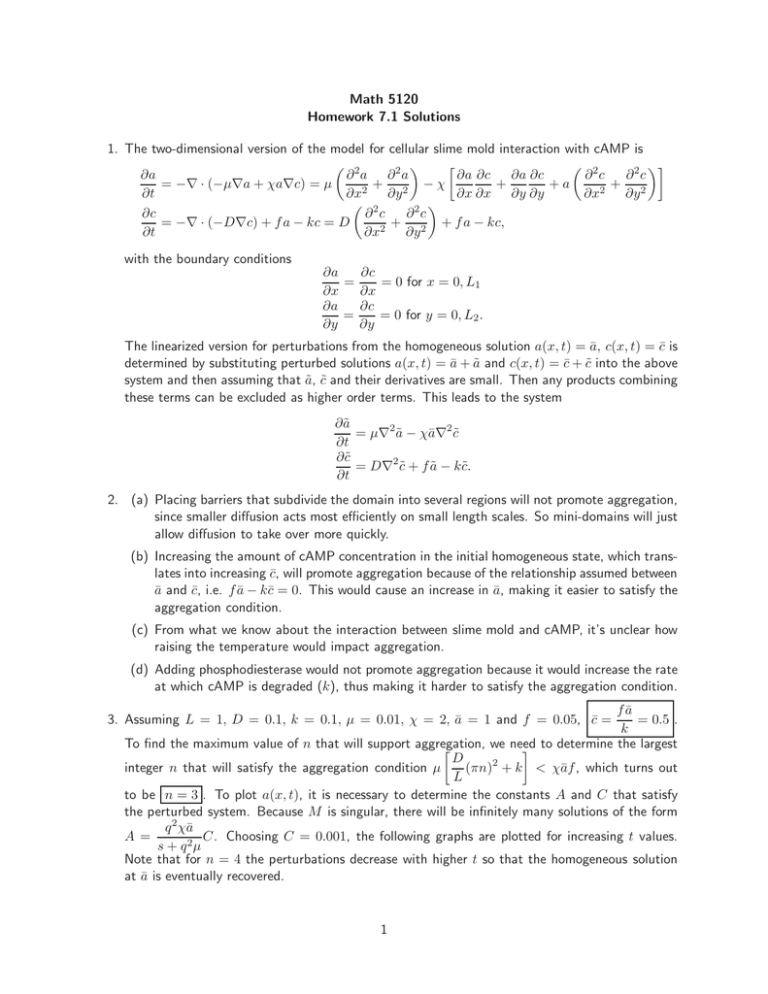
Math 5120 Homework 7.1 Solutions 1. The two-dimensional version of the model for cellular slime mold interaction with cAMP is 2 2 ∂ a ∂2a ∂ c ∂a ∂c ∂a ∂a ∂c ∂2c = −∇ · (−µ∇a + χa∇c) = µ + +a + + −χ ∂t ∂x2 ∂y 2 ∂x ∂x ∂y ∂y ∂x2 ∂y 2 2 ∂ c ∂2c ∂c = −∇ · (−D∇c) + f a − kc = D + + f a − kc, ∂t ∂x2 ∂y 2 with the boundary conditions ∂a ∂c = = 0 for x = 0, L1 ∂x ∂x ∂a ∂c = = 0 for y = 0, L2 . ∂y ∂y The linearized version for perturbations from the homogeneous solution a(x, t) = ā, c(x, t) = c̄ is determined by substituting perturbed solutions a(x, t) = ā + ã and c(x, t) = c̄ + c̃ into the above system and then assuming that ã, c̃ and their derivatives are small. Then any products combining these terms can be excluded as higher order terms. This leads to the system ∂ã = µ∇2 ã − χā∇2 c̃ ∂t ∂c̃ = D∇2 c̃ + f ã − kc̃. ∂t 2. (a) Placing barriers that subdivide the domain into several regions will not promote aggregation, since smaller diffusion acts most efficiently on small length scales. So mini-domains will just allow diffusion to take over more quickly. (b) Increasing the amount of cAMP concentration in the initial homogeneous state, which translates into increasing c̄, will promote aggregation because of the relationship assumed between ā and c̄, i.e. f ā − kc̄ = 0. This would cause an increase in ā, making it easier to satisfy the aggregation condition. (c) From what we know about the interaction between slime mold and cAMP, it’s unclear how raising the temperature would impact aggregation. (d) Adding phosphodiesterase would not promote aggregation because it would increase the rate at which cAMP is degraded (k), thus making it harder to satisfy the aggregation condition. f ā = 0.5 . k To find the maximum value of n that will support aggregation, we need to determine the largest D 2 integer n that will satisfy the aggregation condition µ (πn) + k < χāf , which turns out L to be n = 3 . To plot a(x, t), it is necessary to determine the constants A and C that satisfy the perturbed system. Because M is singular, there will be infinitely many solutions of the form q 2 χā C. Choosing C = 0.001, the following graphs are plotted for increasing t values. A= s + q2µ Note that for n = 4 the perturbations decrease with higher t so that the homogeneous solution at ā is eventually recovered. 3. Assuming L = 1, D = 0.1, k = 0.1, µ = 0.01, χ = 2, ā = 1 and f = 0.05, c̄ = 1 a(x, t) = ā + ã as a function of x for various t and n n=1 n=2 4 6 3 4 a(x,t) a(x,t) 2 1 2 0 0 −2 −1 −2 0 0.2 0.4 0.6 0.8 −4 1 0 0.2 0.4 x 1.3 1.3 1.2 1.2 1.1 1.1 1 0.9 0.8 0.8 0.7 0.7 0.4 1 0.6 0.8 1 1 0.9 0.2 0.8 n=4 1.4 a(x,t) a(x,t) n=3 1.4 0 0.6 x 0.6 0.8 1 0 0.2 x 0.4 x t=0 t=2 2 t=4 t=6 t=8
